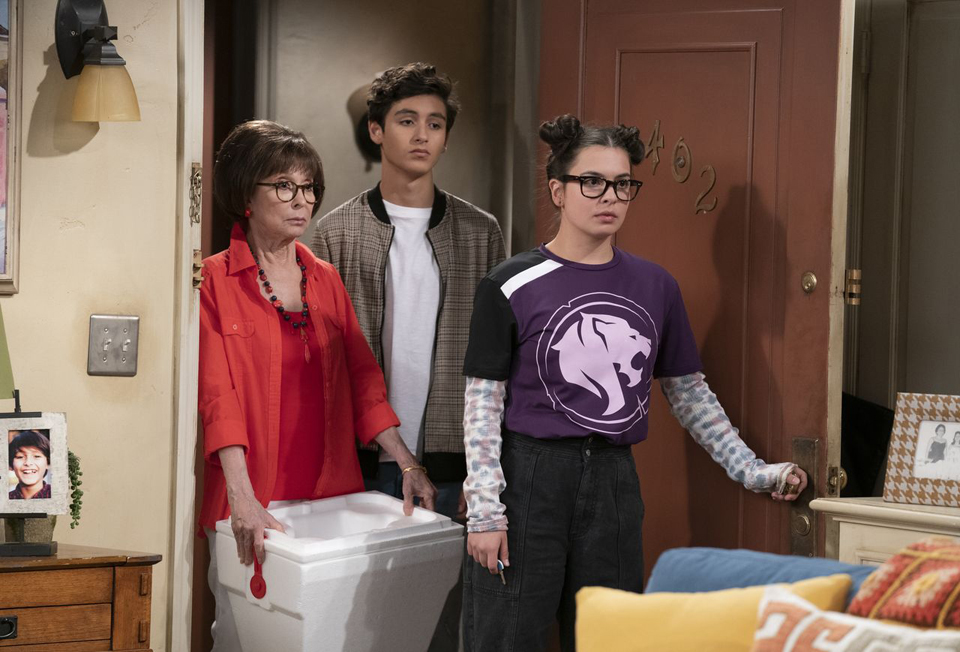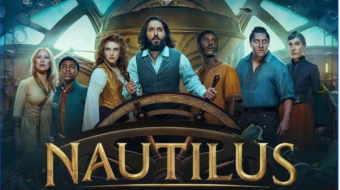
The Swedish series with the mysterious title Jordskott is an anomaly wrapped in an enigma. Really, what it is, is a deeply rooted ecological series posing as a horror/mystery thriller. The mystery thriller elements include abducted children and several murders perpetrated by a ruthless killer which occur around and in an ancient forest under siege. Eva Thornblad is a Swedish cop from the metropolis of Stockholm who returns to her town at the edge of one of the forests that cover over half of the country in search of her lost daughter who disappeared in the forest years before and who suddenly reappears.
The horror elements which emerge slowly and then become more prominent include possible non-human creatures with strange and savage powers, parasites that allow humans to become part of the forest, and a slithery creature whom an old woman very in touch with nature is nourishing in her bathtub.
From the beginning, there is also the crafty and heartless business cabal that wants to cut down the forest, first by logging and then by dynamiting whole stretches of the green woodland. This is the most verdant series on television. Shots abound of brooks and streams running through lush overgrowth. Landscape is a staple of Nordic series but here it is not just used for its stunning beauty but is integrated into the thematic of a series that is about that landscape under pressure and about to be destroyed.
This action takes place in season one with season two returning Eva to the city, but with the forest now a part of her. Both seasons are available on the Horror Streaming Service Shudder and on Amazon Prime. There is a back story, slowly revealed, about how her father had in the 1970s disrupted the ecology by spraying large parts of the forest and killing its strange woodland creatures. (This backstory summons up the over 1 billion animals killed and 100 species endangered in the fires in Australia as a result of global warming.) Unlike her father, it is Eva who then is initiated into the secrets of the life-giving trees and, in order to save her life, becomes a living breathing part of the forest herself.
A book of monsters which lurk in the forest further deepens the mythology, relating it to Scandinavian folklore, itself sprung from a time when the Swedes were more in touch with the life-giving capacity of their landscape. This mystical book recalls the American NBC network series Grimm, which each week explored a different beast from the Hans Christian Andersen menagerie. However, the grounding of this series in the eco-politics of the forest and the determination to continue to deepen the link between mythology or primitive thought and life-giving forces that are being destroyed under a greedy and predatory capitalism set this show apart and make its strange denizens more than merely monsters of the week. It’s a show that could profitably be redone in many countries and particularly Brazil, where the Amazon is under constant attack in Bolsonaro’s money-grubbing regime. Not to mention Pennsylvania’s destruction of its rivers and ecosystem by its exploitation of the Marcellus Shale works as its answer to the financial devastation of the 2008 mortgage crisis, spurred on by Trump’s boosting of the unprofitable waste of fracking.
The final image of the much stronger first season is of one of the forest creatures still in human form melting back into the grass and vegetation. It’s a powerful image reminding us of our primeval origins and the necessity to stay in touch with that more primitive, life-giving side of ourselves.
Netflix and Latina culture
Critical darling, audience favorite and casualty of Netflix’s mysterious and sometimes ruthless ratings system, One Day at a Time, about a Hispanic single-mother family, has now found a second or actually third life on the CBS cable station Pop TV.
The show is a revival of a Norman Lear series in the 1970s which focused on a white middle-class single-mother family. The transposition here is to make the family Cuban, consisting of the breadwinner and mother Lupe, her feminist lesbian daughter Elena, their trying-to-be-“normal” teenage son Alex, and Rita Moreno as the matriarch Lydia, whose fiery and sexually explicit diatribes recall any of the characters from The Golden Girls, only with a Latin touch.
The series is unabashedly old-style, with a loud and extremely exuberant laugh track, jokes required on about every third line, and a lesson learned each week that makes it a pre-Seinfeld sit-com. There is something oddly refreshing about the antiquated nature of the series. Rather than being hip and sophisticated, it’s emotional, touching, and wears its heart on its sleeve.
What really makes it work, far better in fact than stylized “sophisticated” comedies such as Netflix’s own Gentefied, is, and this is borrowed from Norman Lear’s ’70s series, its topicality in terms of dealing with questions that are pressing for Latino and immigrant populations. The new season begins with a cameo by Ray Romano of Everybody Loves Raymond as a census taker, and a debate within the family about whether Latinos, often undocumented, should respond and be counted.

In the opening, the whole family airs this debate, given currency at the moment by Trump’s attempt, ruled illegal, to force respondents to identify whether or not they are citizens. The result of the debate is that they choose to be counted since this is important for state and federal aid. In the second episode of this fourth season, rather than a pithy “lesson,” Lupe learns that she need not cling to her miserly ways and that she can afford more comforts for her family. The “lessons” taught here are ones that affect the well-being of these working-class communities as a whole, not simply middle-class adaptive or coping strategies.
The series is lucky to be airing at all. Netflix canceled it after three seasons, claiming its Netflix ratings, which no one outside the company is privy to, were too low for a fourth season. As one of the show’s actors noted, Netflix, which sometimes saves series which the networks cast aside, in this case, canceled the series. The Nielsen ratings, which are incomplete and only count Netflix subscribers hooked up to a television, nevertheless showed the ratings for the series increasing, more than doubling from season one to season three.
With the major U.S. networks, when a series was in trouble, letter-writing and now social media campaigns often caused the network to change their mind and retain a quirky but impactful show, as happened recently with NBC’s Community. Netflix on the other hand simply acted based on the cold hard facts, making it in this case more ruthless than the networks.
In addition, CBS All Access, the digital component of the CBS network, wanted to air the show, but couldn’t because a clause in the Netflix contract forbade the show airing with any of Netflix’s streaming competitors.
The show was finally revived by Pop TV, a CBS cable channel, best known for the Emmy-nominated Canadian series Schitt’s Creek. CBS, the outlet for the show’s first airing in the 1970s, agreed to also air the show on its network after its run on the cable station, granting the show’s producer Sony two licensing fees and thus making the show more profitable for Sony.
Thus are the fortunes of a series with a community point of view and a form that can reach that community—battered around and only by chance revived in a system that values profit above all else. One Day at a Time struck back at its former digital home when, in the first scene of season four, Alex complains that he is bored since “there is nothing good on Netflix anymore.”










